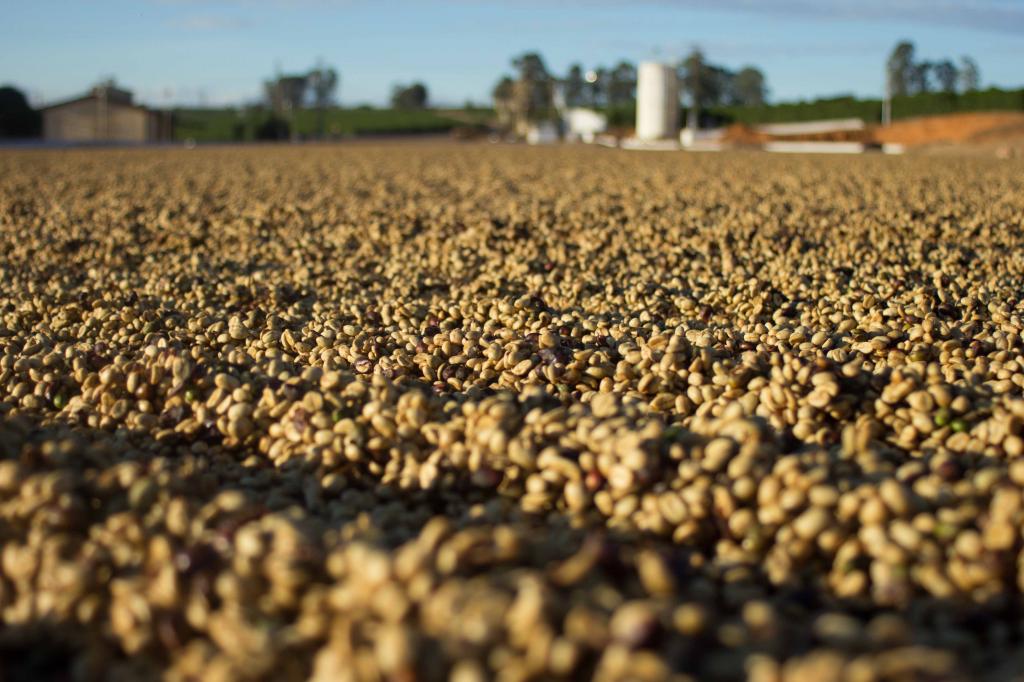The price of coffee has reached a record

Coffee is one of the most traded commodities in the world after oil and natural gas. The world market price is determined through futures contracts. Both highland Arabica coffee and lowland Robusta beans are currently trading at all-time highs on commodity exchanges.
This has far-reaching implications for the entire market, as all market participants in the value chain are guided by the reference price. Coffee traded directly with producers is also affected by the high price increases.

The price development of the C-Market since October 2023
Hot, hotter, 2024
Since the onset of the last El Niño weather phenomenon in June 2023, large coffee-growing regions in Central America, Brazil, and Vietnam have been repeatedly plagued by extreme weather events for 18 months. In the history of El Niño weather records, the last episode is considered the fourth most severe. It brought heat and drought, but also heavy rainfall and flooding. The reduced harvest combined with rising demand for coffee is the main reason for the sharp price increases.
2024 was the hottest year on record. Reduced rainfall and longer periods of heat continued to negatively impact coffee plant growth and harvest in the first half of 2024. At the beginning of 2024, markets had still hoped for a recovery in the Brazilian harvest, but this proved false by spring 2024. At the same time, Vietnam, the world's second-largest coffee producer after Brazil, and Central America were again hit by heat and drought.
Another rapid price increase on the C-Market occurred when heat and drought again hit coffee plants at the beginning of their flowering period in Brazil in September and October 2024. This fueled early fears that the future 2025 harvest in Brazil could again be poor. Since then, green coffee prices have remained at an all-time high with no signs of improvement.
 Dried coffee flowers in India, Source: Fresh Cup
Dried coffee flowers in India, Source: Fresh Cup
High interest rates, blockade in the Suez Canal and Trump
Regardless, other factors also contribute to high coffee prices. On the one hand, financing coffee imports is expensive due to the still relatively high base interest rates. Roasters or coffee traders must pay for green coffee many months before it arrives in their warehouses. Roasters typically purchase an entire annual quantity of a particular coffee. Accordingly, it takes 6-18 months for the purchased green coffee to be roasted, sold, and thus generate revenue.
In addition, transport costs have increased due to the need to circumvent the Suez Canal. Due to ongoing attacks by Houthi rebels on cargo ships, many shipping companies are choosing the significantly longer route from Asia to Europe via the Cape of Good Hope. This also affects coffee from major African coffee-growing countries such as Ethiopia and Kenya. This leads to trade delays and higher costs.

Photo by Darren Halstead, Unsplash
Finally, the strong USD also plays a role in coffee price inflation, at least outside the US. Since coffee is traded in USD, European buyers have to pay more when the EUR has depreciated against the USD. This is precisely what has happened since Trump's election victory, putting additional pressure on coffee procurement prices in the Eurozone.
Moderate price increases for consumers
Consumers will definitely face higher coffee prices in the course of 2025. Depending on the coffee bean, prices for customers will likely rise by between 10-30%. In particular, inexpensive coffees, which are more sensitive to price fluctuations on the secondary market, will rise more sharply than high-quality coffees. In the restaurant industry, a moderate increase of 5-10 cents per cup can be expected, which would cushion the impact of the higher purchase prices.
In summary, the recent sharp price increases are already due to uncertain harvest forecasts for 2025 and reflect the nervousness of market participants. After a poor harvest last year, the market can only be reassured by good news of a better harvest. However, if negative forecasts come true again or if speculation fuels volatility in the coffee market, further price increases cannot be ruled out.
Higher income for coffee farmers
The main beneficiaries of high coffee prices are coffee producers and their harvest workers. The sharp increase in coffee prices benefits all producers who produced at least half of last year's harvest (because the price of coffee has doubled). This is welcome news in terms of social justice. After all, many harvest workers still live below the poverty line and benefit enormously from being able to demand significantly higher wages for the coffee cherries they pick. Thus, there is also some benefit to be gained from higher coffee prices. One can only hope that prices settle at a stable, sustainable level for all market participants and that coffee does not become a luxury product.

Leave a comment